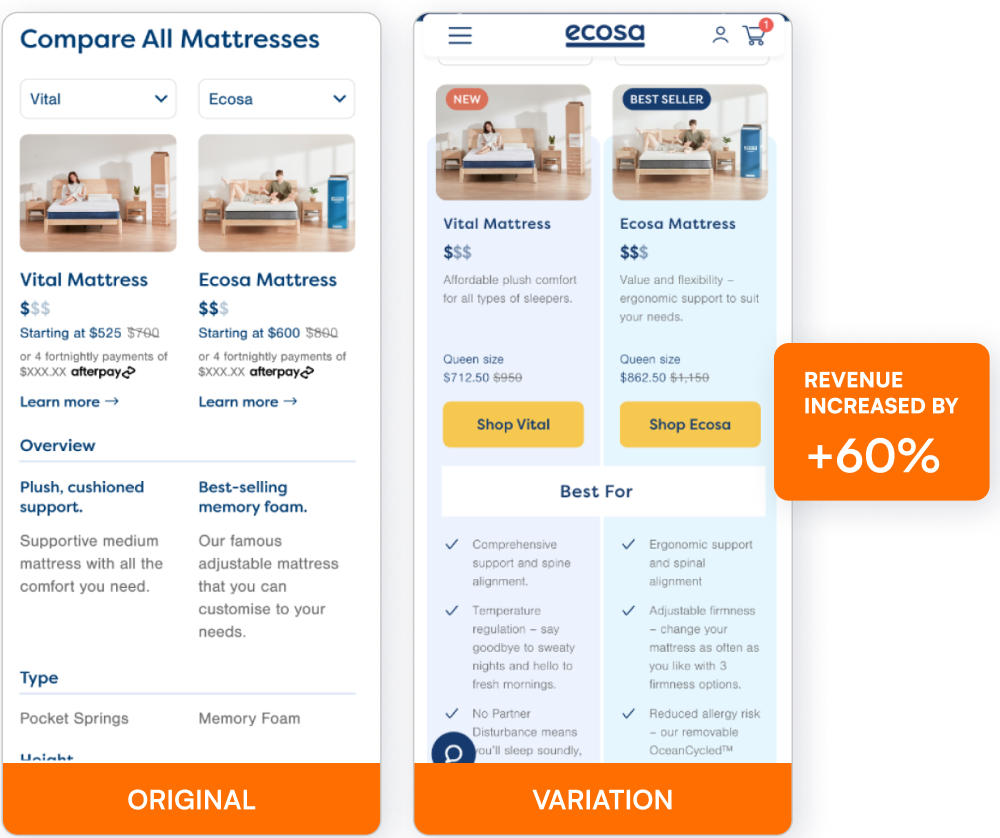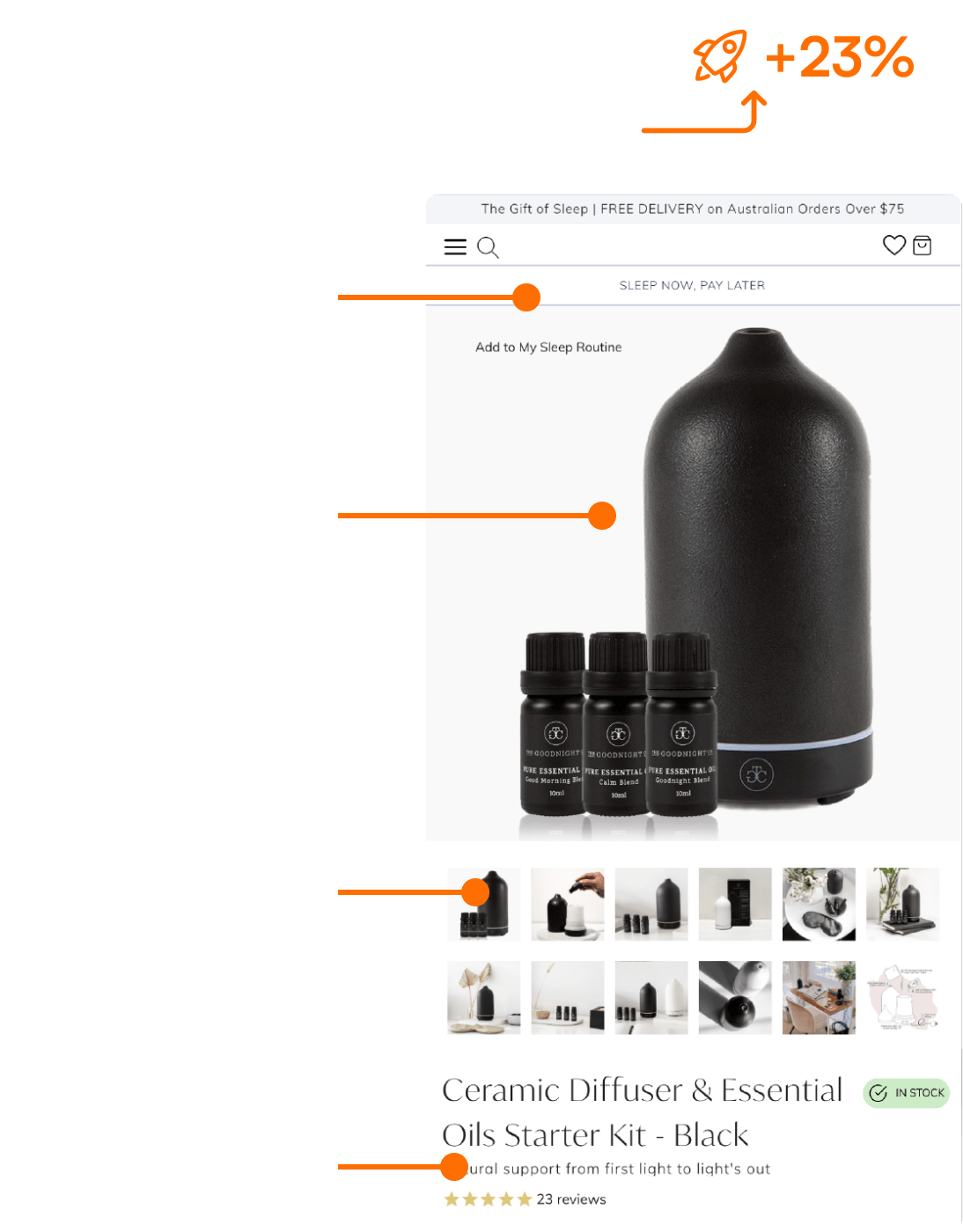If your website has 10,000 monthly users and converts 3% of them, a single-point increase in your conversion rate would bring in 33% more paying customers every month. Boosting your conversion rate means more revenue per user, fewer customer acquisition costs, and an improved product affinity.
But where do you start? Running a conversion rate optimisation (CRO) audit will show you how to fix bottlenecks, meet user needs, and improve your site's conversions.
How to Prepare for a CRO Audit?
A conversion rate optimization audit is a 360-degree evaluation of the user experience (UX) that tests how your webpage performs, identifies factors that could hurt your conversion rate, and helps you prioritise improvements.
The best time to do a CRO audit is after launch; avoid diving into a full-scale audit too early before optimising your marketing strategies and understanding your customer journey.
Set internal milestones for when to run a CRO audit, such as after a certain number of purchases (if you're running an eCommerce store) or paying customers (for agency or SaaS owners).
Identify clear parameters and bake them into your launch strategy. For example:
- CRO audit after 250 direct site purchases
- CRO audit after 50 client signups
- CRO audit after $5,000 in ad spend
Large, established enterprises also benefit from CRO audits beyond the launch stage, using different benchmarks—for example, when you reach 10,000 monthly users or at regular intervals, like every three or six months.
9 Steps to Perform an Effective CRO Audit
So, how do you spot real product improvement opportunities and find the user pain points dragging your conversion rate down? The best CRO audits are focused on deeply understanding your users and finding ways to meet their needs rather than identifying superficial changes that boost conversions but don't improve UX.
Use this step-by-step process to run a comprehensive, customer-focused audit to inform your CRO program:
Step 1: Define Key Conversion Actions
Before you jump into your CRO audit, take some time to assess which conversions your business needs to track for your customers and your organisation, and set clear conversion goals.
Conversions are user actions that bring them one step closer to becoming paying customers. For an eCommerce store, conversion rate typically refers to the percentage of users who check out and buy a product, while for a SaaS business, it generally means trial signups or other goal completion metrics—like lead magnet signups or webinar registrations.
Consult with various stakeholders to determine precisely what conversions mean across your organisation. As well as macro conversions, like purchases, subscriptions, and signups, determine which micro conversions—like users adding a product to their wishlist or cart or watching a demo video—you want to track across the entire customer journey.
Step 2: Focus on Priority Pages
Follow CRO best practices by running your audit on pages that have the most potential to impact your conversions. Consider the page's traffic and location in the user journey to narrow down your list of priority pages.
Aim to audit conversion-oriented pages with healthy traffic numbers to see results much quicker and determine whether your optimization efforts are headed in the right direction. Top-of-the-funnel (TOFU) content, which helps businesses create awareness about their product, tends to get a lot of traffic but doesn't lead to direct conversions since it's positioned at the start of the customer journey—so don't make TOFU your main audit focus.
For example, a blog post aiming to rank for an informational keyword may have tens of thousands of visitors but minimal direct sales impact. However, blog posts linking to conversion-focused product pages help you run an effective CRO audit to make changes that get results.
Prioritise pages that act as critical touchpoints in the customer journey—like specific landing pages designed to convert or pages where users sign up for demos or download whitepapers or ebooks.
Step 3: Understand User Behaviour
By now, you should understand which conversion actions and pages you want to audit and optimise.
The next step is to analyse user behaviour to understand how visitors engage with your site and get insights on whether or not they're converting—and why. Use goal conversions in Google Analytics, enable event tracking, and analyse whether your users are taking key conversion actions like purchasing, signing up for a newsletter, or registering for a webinar.
Step 4: Identify Easy Fixes
Combine qualitative and quantitative data by tracking user behaviour and collecting VoC (Voice of Customer) insights to understand user satisfaction, objectives, and concerns and discover what's blocking conversions.
Based on your new CRO audit insights, identify 'quick wins' or easy fixes to implement on your page, focusing on removing friction points.
For example, if you're driving paid traffic to a downloadable resource like an ebook, how many form fields do users have to fill out to access the resource? User feedback and recordings show they're put off by having to input their name, email address, and a bunch of other personal details before getting to the ebook. A quick win here would be eliminating unnecessary fields and making the process as fast and easy as possible.
If you're an eCommerce store owner, look for bugs, blockers, and opportunities to streamline the checkout process. To do this, compare recordings of users who drop off before checkout and those who complete a purchase, and run through the checkout process yourself to understand possible points of frustration in the journey.
Here's a handy checklist to find other quick wins in your CRO audit. Check if your core product and service pages are missing any of the following:
- An attention-grabbing headline
- A clear value proposition
- High-quality images
- Liberal use of white space
- Social proof through testimonials, case studies, and user-generated content
- Compelling offers like a free trial or money-back guarantee
- Easy ways to get in touch with you either via live chat or a contact form
- Clear, consistent CTAs
Check out our conversion rate audit page for more quick-win ideas.
Step 5: Form a Conversion Hypothesis
For more considerable product changes, create a specific hypothesis to test that helps you understand which improvements will substantially impact your conversions.
Based on what you learn through user and product research, zero in on particular pages and site elements you can optimise to meet user needs better and boost conversions.
For example, if you see that time-on-page is low and bounce rates are high on a key landing page, get more user insights to discover why. You may find your messaging isn't resonating with your audience.
Next, you'll create a hypothesis: if we include use cases that are more relevant to our target audience, the conversion rate on this landing page will improve by 2%. Or your 'book a demo' page is converting poorly, and users tell you they're not signing up because they're unclear on the time commitment and logistics involved in the demo call. Your hypothesis might be that twice as many users will book if we add precise details above the fold on how long the demo lasts and what it'll look like.
These hypotheses will form the basis of your A/B tests, which brings us to our next step.
Step 6: Run A/B Tests
Once you've identified clear hypotheses, start the final part of your audit: launching A/B tests to evaluate their success and make data-informed CRO decisions.
First, set clear outcomes and goals to measure the outcome of your tests. Use an A/B testing tool to help you set up practical experiments—Google Optimise. Once you've set up a test page and control page, split traffic between the two versions and let the experiment run until you have a critical mass of data to decide the winner.
Check out our eCommerce conversion rate optimisation page for more information on running practical A/B tests.
Step 7: Implement Changes and Monitor Results
After determining the winner of your A/B tests, implement the changes across your site. Continuously monitor the impact on your conversion rates to ensure the desired improvements.
Step 8: Gather Feedback and Iterate
Collect feedback from users to understand their experiences and pain points. Use this feedback to make further improvements and iteratively optimise your site.
Step 9: Schedule Regular CRO Audits
Finally, schedule regular CRO audits to keep your site optimised. Regular audits help you stay ahead of changes in user behaviour and market trends.
Conclusion
A comprehensive CRO audit is essential for optimising your website and boosting conversions. You can significantly enhance your site's performance by following a systematic approach and using data-driven insights. At Conversionry, we specialise in providing detailed CRO audit services to help you achieve your business goals.
Beat your competition to it!
Get the latest actionable conversion strategies delivered straight to your inbox!













